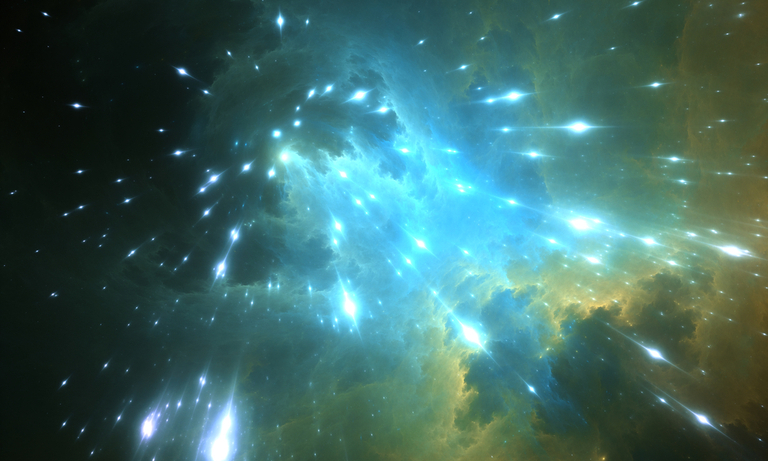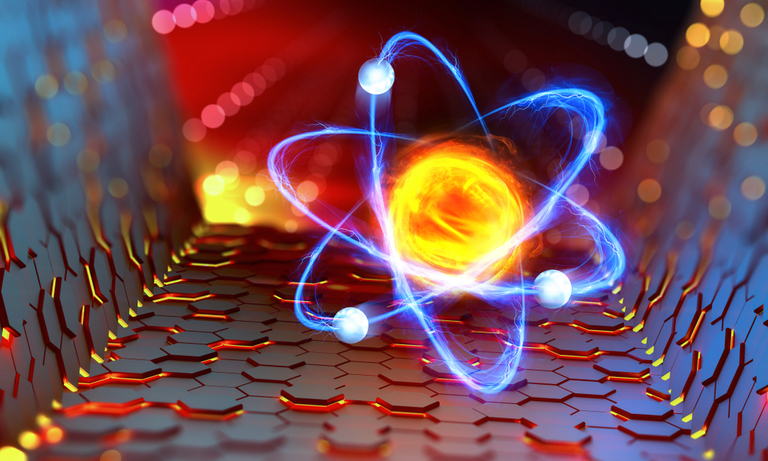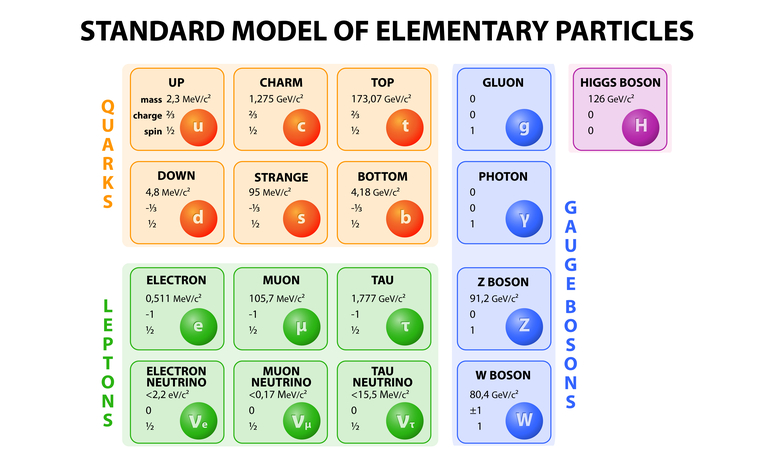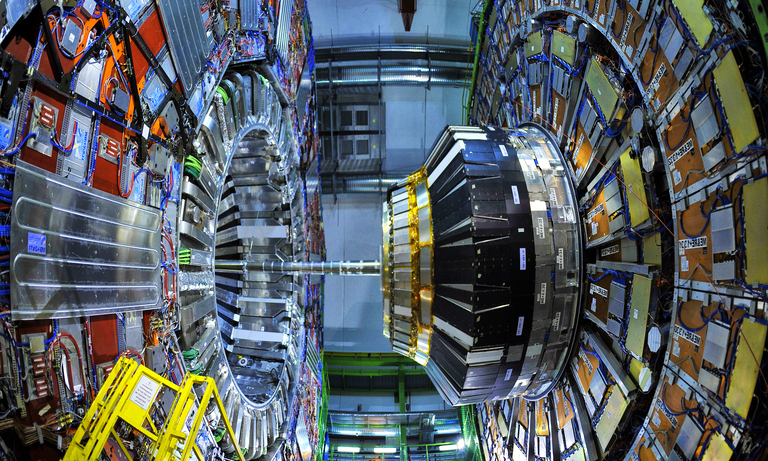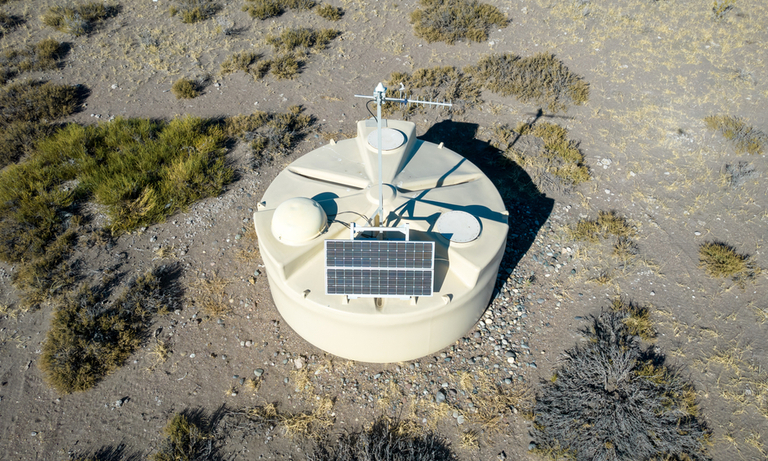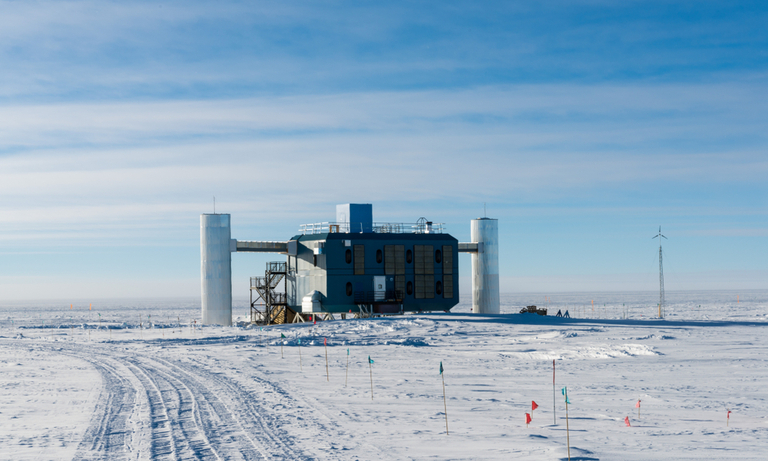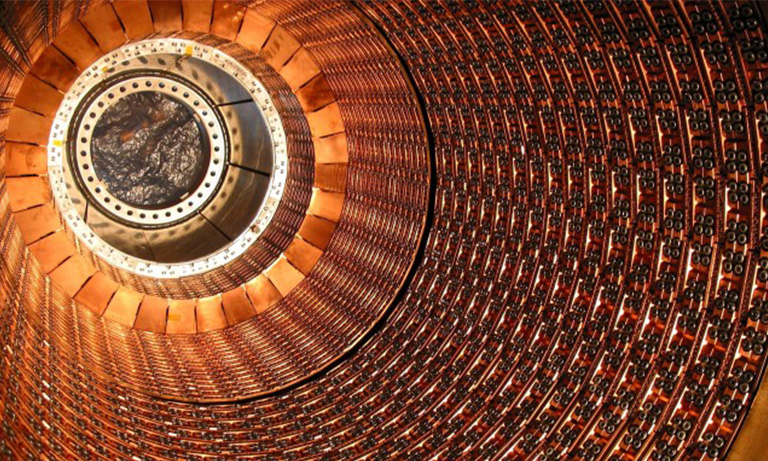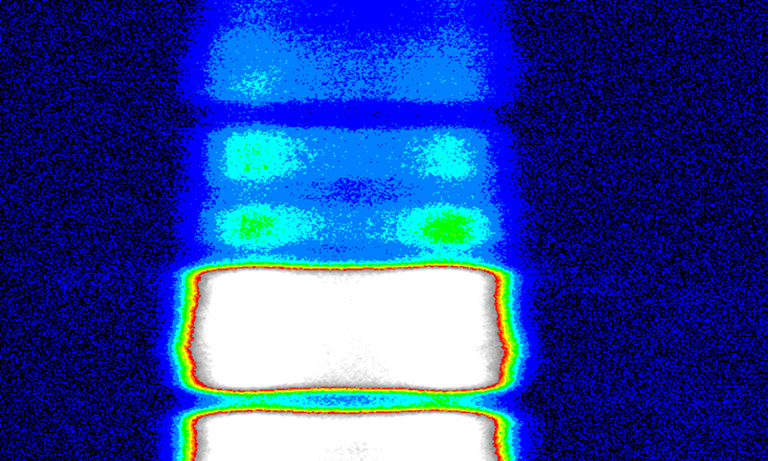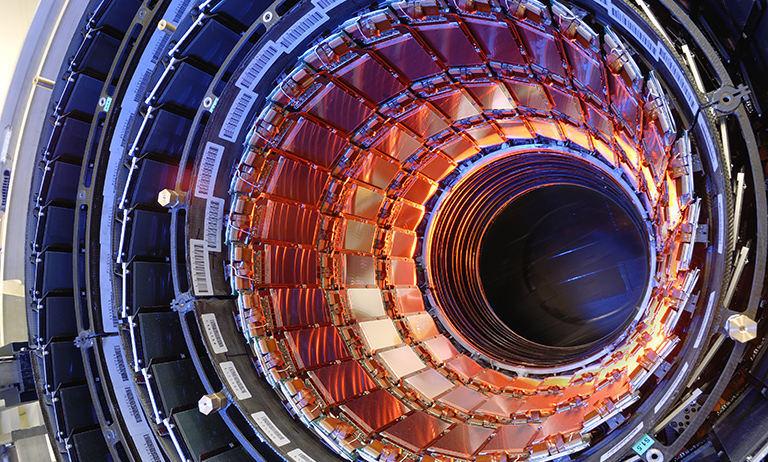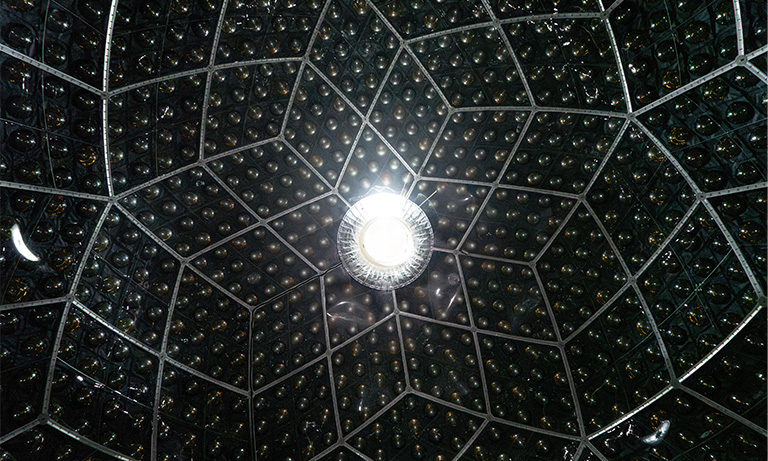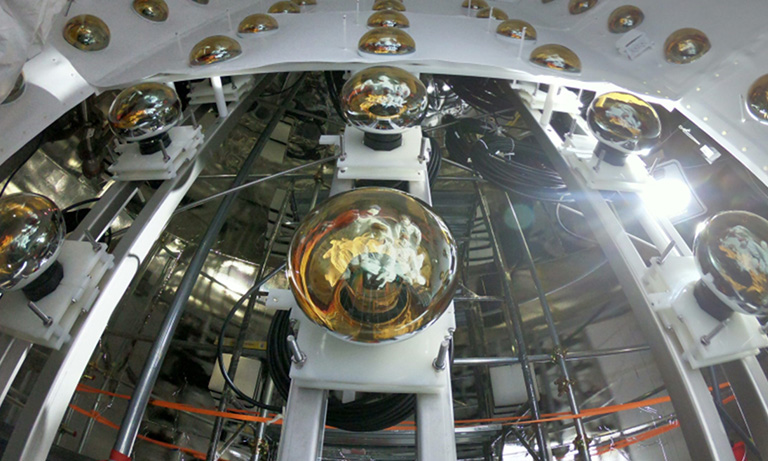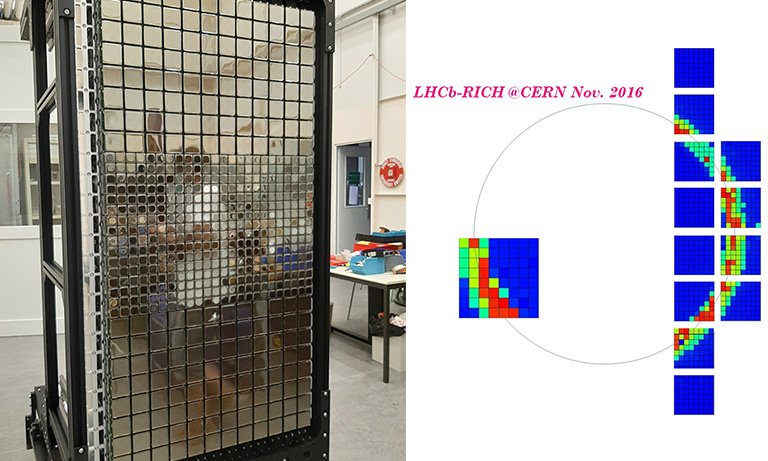Home
Products
Physics Research Field
Type of Experiment
Detector Type
Behind the Science
Tech in a Nutshell
United Kingdom (EN)
Select your region or country.


Hadron and Nuclei Spectroscopy
Hadron spectroscopy is the subfield of particle physics which studies the properties of hadrons. Hadrons are composite particles made of quarks held together by the strong nuclear force. The theory that describes the properties of hadrons is quantum chromodynamics (QCD), a gauge theory which describes hadrons as being made up of dynamically confined quarks and gluons. The main goals of the hadron spectroscopy are:
- Quantitative understanding of quark and gluon confinement
- Revealing the nature of the mass of the hadrons
- See the QCD degrees of freedom at work
- Validate lattice QCD predictions.
Lattice QCD is a lattice gauge theory formulated on a grid or lattice of points in space and time. When the size of the lattice is taken infinitely large and its sites infinitesimally close to each other, the continuum QCD is recovered.
QCD predicts that quarks, q , and antiquarks, q-, bind into particles called mesons (e.g. Kaons, Pions). Another type of hadron is called a baryon which is made of three quarks (e.g. protons and neutrons). Potentially QCD also predicts boundary states made only by gluons called glueballs. The gluons are an elementary particle that acts as the exchange particle for the strong force between quarks. Another important goal in the field of hadronic spectroscopy is to find experimental evidence for exotic mesons, tetraquarks, molecules of hadrons and glueballs.
One of the main challenges of hadron physics is the search for gluonic excitations, i.e. hadrons in which the gluons can act as principal components. These gluonic hadrons fall into two main categories: glueballs, i.e. states where only gluons contribute to the overall quantum numbers and hybrids which consist of valence quarks and antiquarks as hadrons plus one or more excited gluons which contribute to the overall quantum numbers.
Understanding of the baryon spectrum is also one of the primary goals of non-perturbative QCD. In the nucleon sector, where most of the experimental information is available, the agreement with quark model predictions is astonishingly small and the situation is even worse in the strange baryon sector. All of the above-mentioned challenges are conducted by several laboratories around the world (i.e. GSI and JLab).
The GSI operates a worldwide unique large-scale accelerator facility for heavy ions, where the PANDA experiment is hosted. The PANDA experiment will study hadron physics. In this experiment, a detector with the following characteristics is mandatory:
- Nearly full coverage of the solid angle
- Good particle identification
- High energy and angular resolutions for charged particles and photons.

Fig. 1: Schematic view of the PANDA detector.
The proposed detector is subdivided into the target spectrometer (TS) consisting of a solenoid around the interaction region and a forward spectrometer (FS) based on a dipole to momentum-analyze the forward-going particles.
The combination of two spectrometers allows a full angular coverage, it takes into account the wide range of energies and it still has sufficient flexibility, therefore individual components can be exchanged or added for specific experiments.
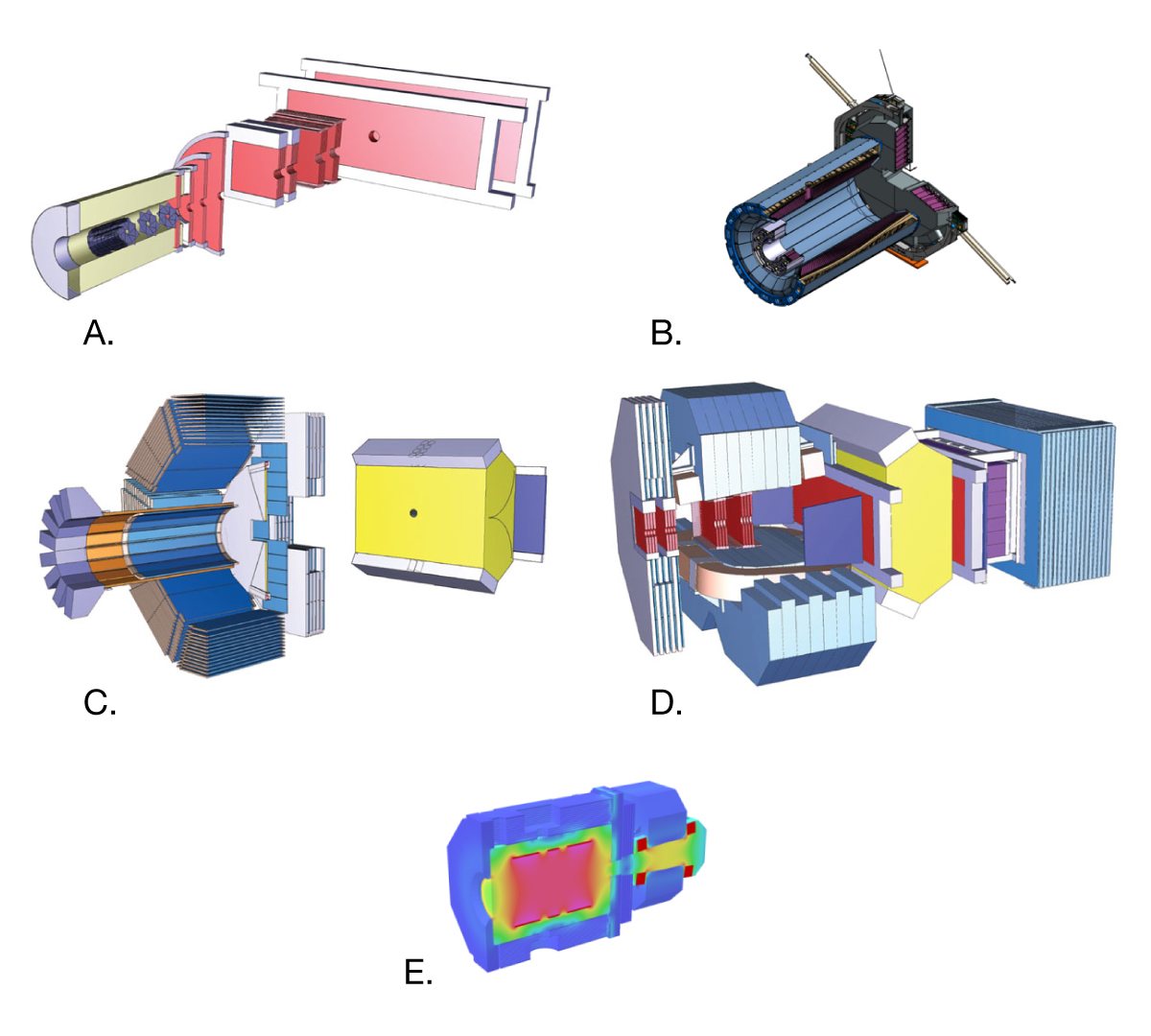
Fig. 2: Schematic view of the tracker (a), the electromagnetic calorimeter (b), PID detector (c), forward spectrometer (d), magnet system (e).
The experiment is equipped with:
- Tracking system (Fig. 2a), to provide measurement of charged particle trajectories with high resolution over the complete solid angle.
- Electromagnetic calorimeter (Fig. 2b), for a good identification and a complete reconstruction of multi-photon and lepton-pair channels.
- Target and beamline for the production, accumulation and storage of the antiprotons.
- Particle IDentification detector (also known as PID, Fig. 2c)
- Forward spectrometer (Fig. 2d), for precise tracking and identification of charged tracks, and to provide high quality measurements of neutral particles in very forward directions.
- Magnet system (Fig. 2e), for momentum reconstruction and subsequent particle identification of charged particles.
Both the tracker and the PID of the PANDA experiment use photosensors for particle detection for example, the MaPMTs by Hamamatsu Photonics type H12700 and H13700.
The PID detector of PANDA comprises of a DIRC and RICH detector (Fig. 2c).

Fig. 3: Barrel DIRC baseline design (half detector shown).
© IOP Publishing & Sissa Medialab, 2017. Reproduced from JINST 12 C07006.
The Barrel DIRC detector of the PANDA experiment is made of 16 optically isolated sectors, each comprising a bar box and a solid fused silica prism, surrounding the beam line in a 16-sided polygonal barrel with a radius of 476 mm and covers the polar angle range of 22° to 140° (Fig. 3). A flat mirror is attached to the forward end of each bar to reflect photons towards the read-out end, where they are focused using a three-component spherical compound lens on the back of a 30 cm deep solid prism, made of synthetic fused silica and serving as expansion volume.
The location and arrival time of the photons are measured by an array of 11 photodetectors. Since the sensor has to work in a magnetic field of ≈ 1 T, the magnetic field of the PANDA target spectrometer (TS) solenoid puts severe design constraints on the photon readout. For these reasons MCP-PMTs were considered (e.g. Hamamatsu Photonics, R13266-07-M64 and R13266-07-M768).
Another experiment dedicated to hadronic spectroscopy is GlueX. GlueX is hosted in the Thomas Jefferson National Accelerator facility (JLab). The detector (shown in Fig. 4) has been designed to observe the exotic hybrid mesons.
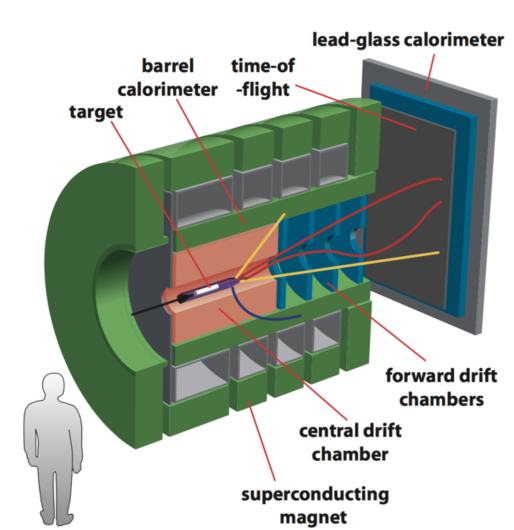
Fig. 4: Schematic view of the GlueX detector
Detailed comparisons of the experimental results to theoretical predictions on the excitations of the gluonic field in mesonic systems will lead to a more detailed understanding of the role of glue in the confinement of quarks inside hadronic matter.
Photoproduction is expected to be particularly effective during the exotic hybrid mesons production but there is little data on the photoproduction of light mesons. GlueX will use the coherent bremsstrahlung technique to produce a linearly polarized photon beam. This device is responsible for the detection, identification and total energy measurement of both neutral (photons, neutrons) and charged (protons, pions) particles.
At the heart of the GlueX detector is its electromagnetic barrel calorimeter (BCAL), which must provide excellent energy and timing resolution, low threshold of detection and the ability to completely contain the electromagnetic showers resulting from the conversion of photons.
The GlueX-BCAL will be inserted and operated in a ~2 T magnetic field required for the GlueX experiment. This high magnetic field is a constraint to the choice of the photo-sensors for the calorimeter. Under this condition, regular vacuum PMT's are very sensitive to the orientation of the magnetic field.
After extensive tests on a variety of sensors, the chosen photodetector for the GlueX barrel calorimeter was a custom SiPM array manufactured by Hamamatsu Photonics. Data on mesons production and decays are collected thanks to a solenoid-based hermetic detector.
This data will also be used to study the spectrum of conventional mesons, including the poorly understood excited vector mesons and strangeonium.
- Confirmation
-
It looks like you're in the . If this is not your location, please select the correct region or country below.
You're headed to Hamamatsu Photonics website for GB (English). If you want to view an other country's site, the optimized information will be provided by selecting options below.
In order to use this website comfortably, we use cookies. For cookie details please see our cookie policy.
- Cookie Policy
-
This website or its third-party tools use cookies, which are necessary to its functioning and required to achieve the purposes illustrated in this cookie policy. By closing the cookie warning banner, scrolling the page, clicking a link or continuing to browse otherwise, you agree to the use of cookies.
Hamamatsu uses cookies in order to enhance your experience on our website and ensure that our website functions.
You can visit this page at any time to learn more about cookies, get the most up to date information on how we use cookies and manage your cookie settings. We will not use cookies for any purpose other than the ones stated, but please note that we reserve the right to update our cookies.
1. What are cookies?
For modern websites to work according to visitor’s expectations, they need to collect certain basic information about visitors. To do this, a site will create small text files which are placed on visitor’s devices (computer or mobile) - these files are known as cookies when you access a website. Cookies are used in order to make websites function and work efficiently. Cookies are uniquely assigned to each visitor and can only be read by a web server in the domain that issued the cookie to the visitor. Cookies cannot be used to run programs or deliver viruses to a visitor’s device.
Cookies do various jobs which make the visitor’s experience of the internet much smoother and more interactive. For instance, cookies are used to remember the visitor’s preferences on sites they visit often, to remember language preference and to help navigate between pages more efficiently. Much, though not all, of the data collected is anonymous, though some of it is designed to detect browsing patterns and approximate geographical location to improve the visitor experience.
Certain type of cookies may require the data subject’s consent before storing them on the computer.
2. What are the different types of cookies?
This website uses two types of cookies:
- First party cookies. For our website, the first party cookies are controlled and maintained by Hamamatsu. No other parties have access to these cookies.
- Third party cookies. These cookies are implemented by organizations outside Hamamatsu. We do not have access to the data in these cookies, but we use these cookies to improve the overall website experience.
3. How do we use cookies?
This website uses cookies for following purposes:
- Certain cookies are necessary for our website to function. These are strictly necessary cookies and are required to enable website access, support navigation or provide relevant content. These cookies direct you to the correct region or country, and support security and ecommerce. Strictly necessary cookies also enforce your privacy preferences. Without these strictly necessary cookies, much of our website will not function.
- Analytics cookies are used to track website usage. This data enables us to improve our website usability, performance and website administration. In our analytics cookies, we do not store any personal identifying information.
- Functionality cookies. These are used to recognize you when you return to our website. This enables us to personalize our content for you, greet you by name and remember your preferences (for example, your choice of language or region).
- These cookies record your visit to our website, the pages you have visited and the links you have followed. We will use this information to make our website and the advertising displayed on it more relevant to your interests. We may also share this information with third parties for this purpose.
Cookies help us help you. Through the use of cookies, we learn what is important to our visitors and we develop and enhance website content and functionality to support your experience. Much of our website can be accessed if cookies are disabled, however certain website functions may not work. And, we believe your current and future visits will be enhanced if cookies are enabled.
4. Which cookies do we use?
There are two ways to manage cookie preferences.
- You can set your cookie preferences on your device or in your browser.
- You can set your cookie preferences at the website level.
If you don’t want to receive cookies, you can modify your browser so that it notifies you when cookies are sent to it or you can refuse cookies altogether. You can also delete cookies that have already been set.
If you wish to restrict or block web browser cookies which are set on your device then you can do this through your browser settings; the Help function within your browser should tell you how. Alternatively, you may wish to visit www.aboutcookies.org, which contains comprehensive information on how to do this on a wide variety of desktop browsers.
5. What are Internet tags and how do we use them with cookies?
Occasionally, we may use internet tags (also known as action tags, single-pixel GIFs, clear GIFs, invisible GIFs and 1-by-1 GIFs) at this site and may deploy these tags/cookies through a third-party advertising partner or a web analytical service partner which may be located and store the respective information (including your IP-address) in a foreign country. These tags/cookies are placed on both online advertisements that bring users to this site and on different pages of this site. We use this technology to measure the visitors' responses to our sites and the effectiveness of our advertising campaigns (including how many times a page is opened and which information is consulted) as well as to evaluate your use of this website. The third-party partner or the web analytical service partner may be able to collect data about visitors to our and other sites because of these internet tags/cookies, may compose reports regarding the website’s activity for us and may provide further services which are related to the use of the website and the internet. They may provide such information to other parties if there is a legal requirement that they do so, or if they hire the other parties to process information on their behalf.
If you would like more information about web tags and cookies associated with on-line advertising or to opt-out of third-party collection of this information, please visit the Network Advertising Initiative website http://www.networkadvertising.org.
6. Analytics and Advertisement Cookies
We use third-party cookies (such as Google Analytics) to track visitors on our website, to get reports about how visitors use the website and to inform, optimize and serve ads based on someone's past visits to our website.
You may opt-out of Google Analytics cookies by the websites provided by Google:
https://tools.google.com/dlpage/gaoptout?hl=en
As provided in this Privacy Policy (Article 5), you can learn more about opt-out cookies by the website provided by Network Advertising Initiative:
http://www.networkadvertising.org
We inform you that in such case you will not be able to wholly use all functions of our website.
Close


